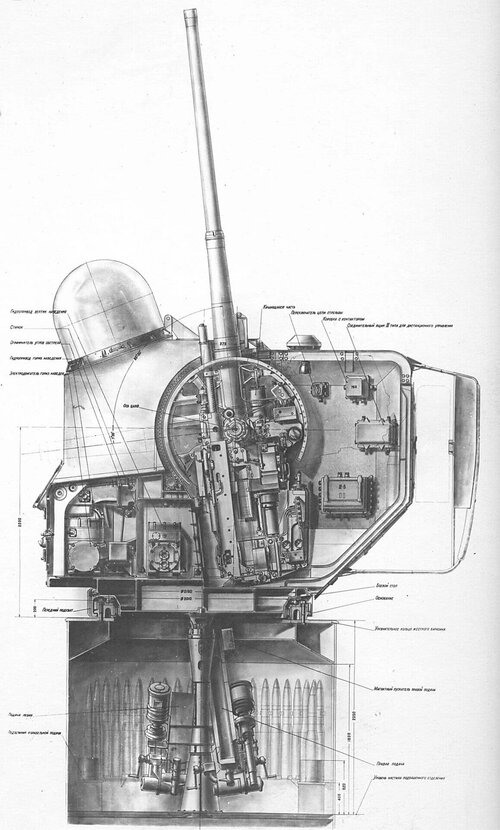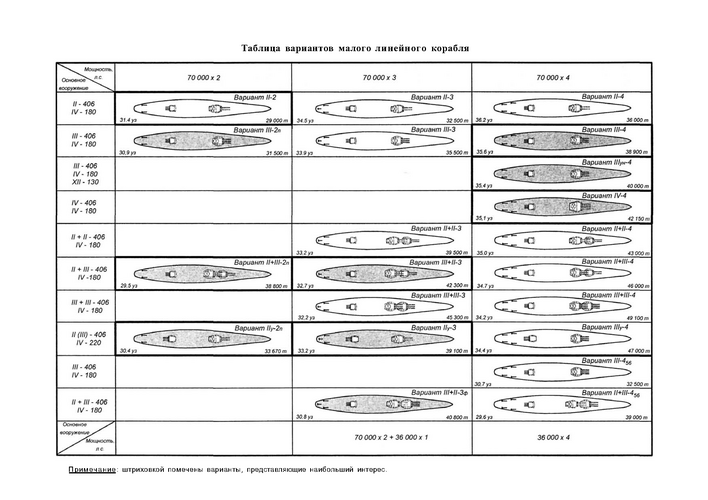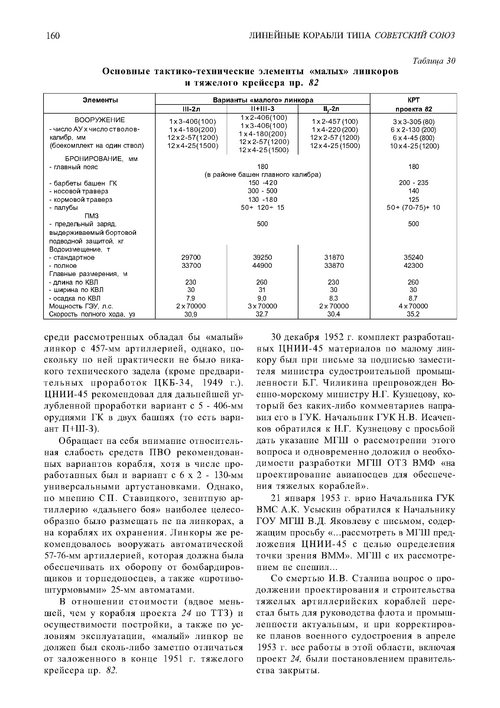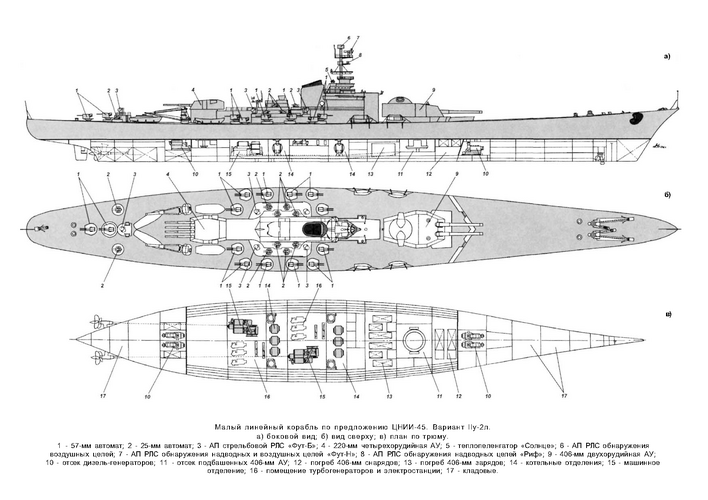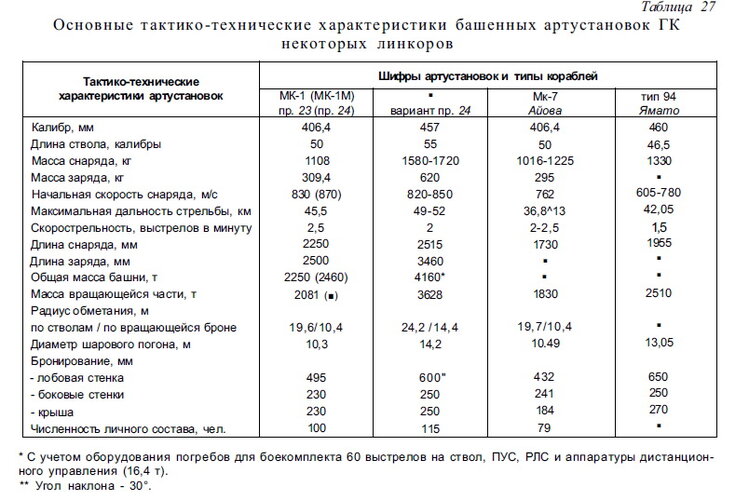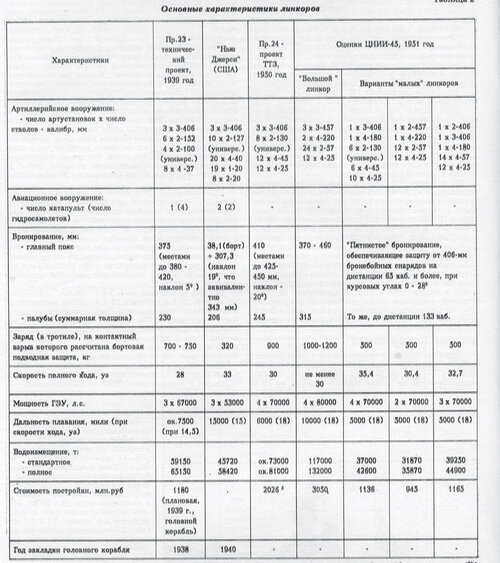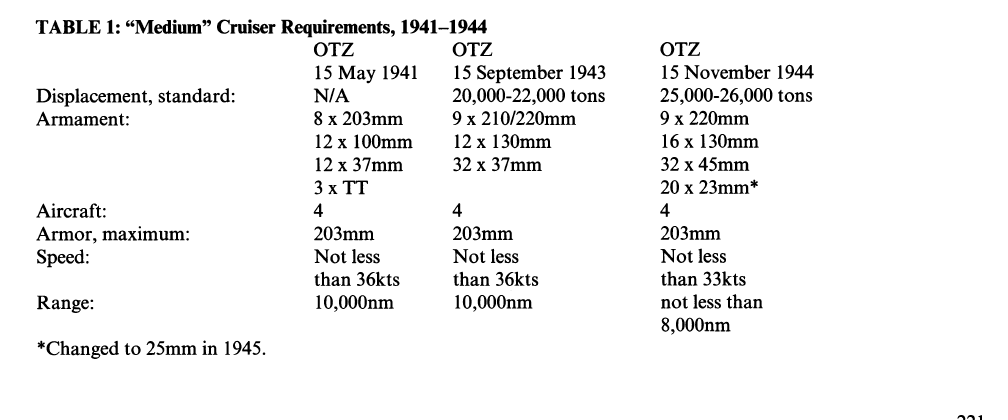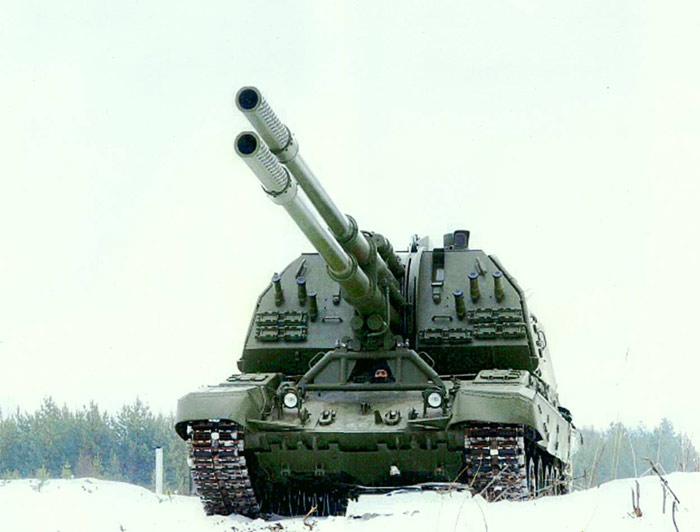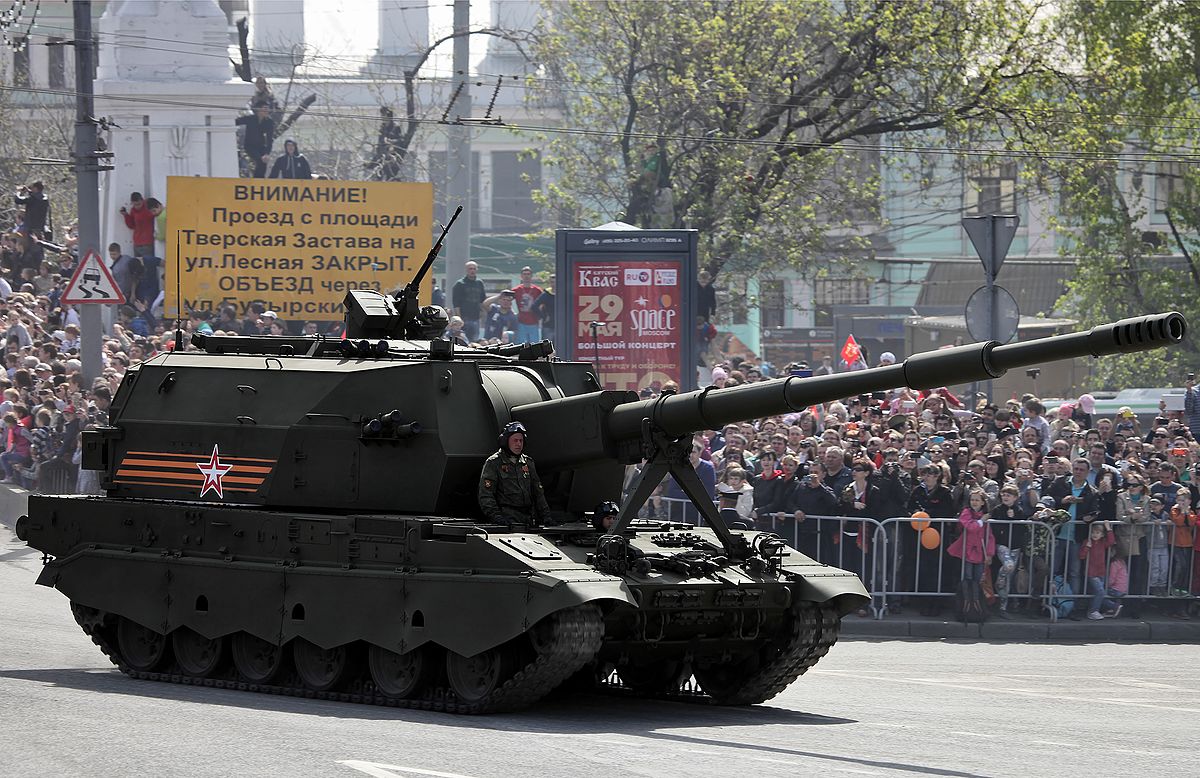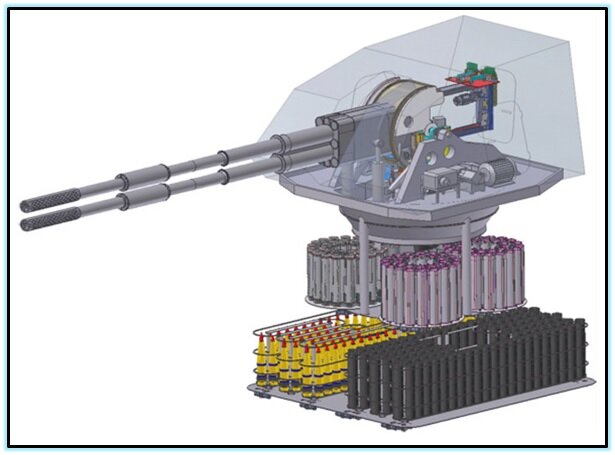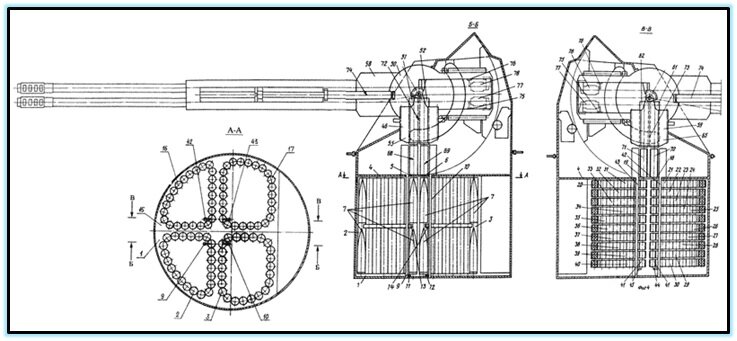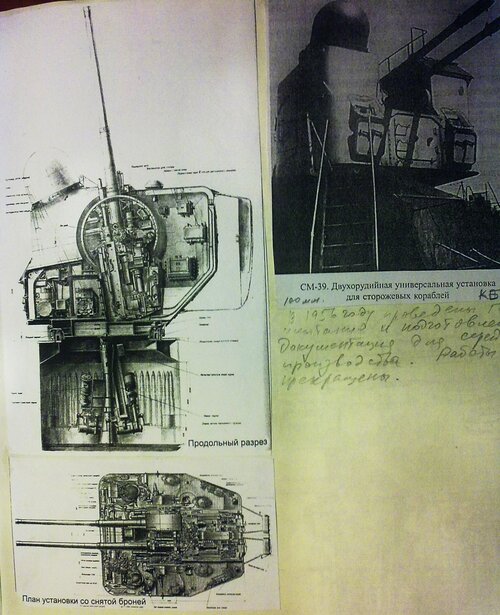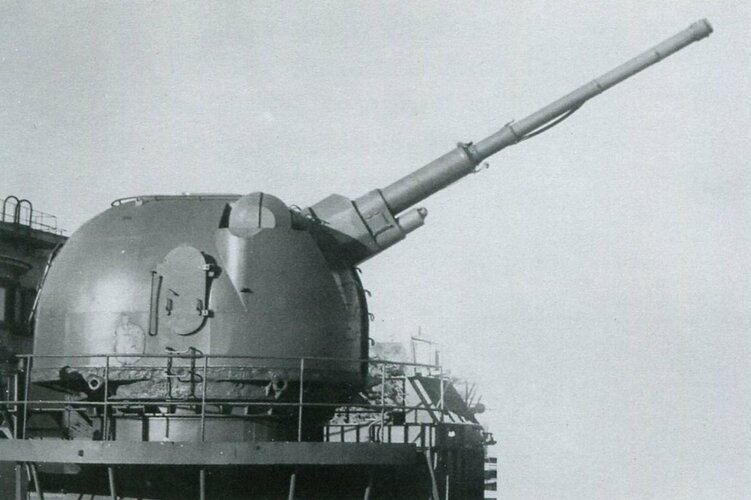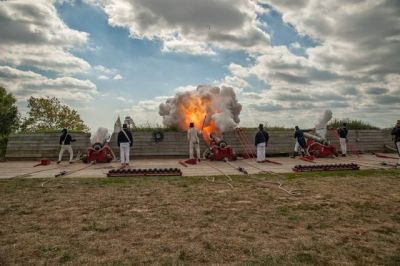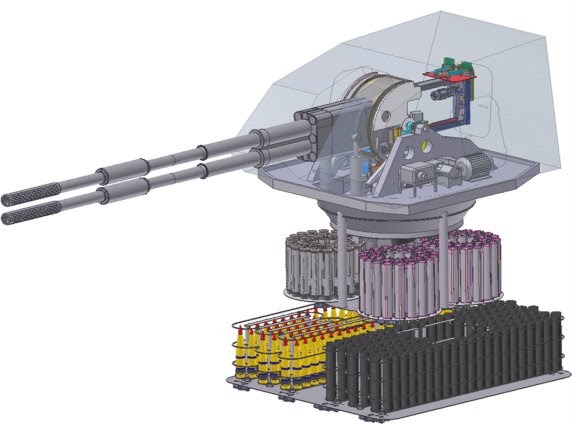- Joined
- 1 February 2011
- Messages
- 2,615
- Reaction score
- 2,588
I wish to collect, gather and discuss (But more importantly collect) the various naval gun projects the Soviet Union created, abandoned or wished to create.
Here I list them what I've gathered so far according to type, feel free to comment, provide info and I will edit them in.
Capital ship calibre guns: 300mm+
530mm Cannon - proposed for the TTZ BB study of 1936 (most likely no serious work was done)
Turrets: 2-gun turret
500mm Cannon - proposed for the TTZ BB study of 1936 (most likely no serious work was done)
Turrets: 3-gun turret
460mm Cannon - proposed for the NIVK and TTZ BB studies of 1936 (most likely no serious work was done)
Turrets: 3-gun turret
457mm/55 Cannon (Pattern 1951?) - proposed for the post war Project 45 BB studies 1950/51 Shell: 1.580kg, MV: 850m/s or shell: 1.720kg, MV: 820m/s
Turrets: 2-gun and 3-gun turrets
457mm Cannon - proposed for the TTZ BB studies of 1936 (most likely no serious work was done)
Turrets: 3-gun turret
456mm Cannon - proposed for the NIVK BB studies of 1936 (most likely no serious work was done)
Turrets: 3-gun turret
450mm Cannon - proposed for the TSKB-1 BB studies of 1935 (most likely no serious work was done)
Turrets: 3- and 4-gun turret
406mm Cannon - proposed for the post war Project 45 BB studies 1950/51 (most likely no serious work was done) Shell: 1.115kg, MV: 900m/s or Shell: 1.225kg, MV: 762m/s
Turrets: 2- and 3-gun Turrets
406mm/50 B-37 Pattern 1937 - intended for TSKB-1, TTZ, KB-4 BB designs of 1936-40 including the Sovetsky Soyuz class. Shell: 1.108kg, MV: 830m/s
Turrets: MK-1 3-gun Turret
400mm Cannon - proposed for the TSKB-1 BB studies of 1935 and TTZ studies of 1936 (most likely no serious work was done)
Turrets: 4-gun turret
356mm/54 Cannon (Pattern 1938?)- proposed for the TTZ BB studies of 1937, Project 64, built as a railway cannon TP-1 Shell: 750kg, MV: 870m/s
Turrets: 3-gun turret
305mm/62 SM-33 Pattern 1948 - intended for post war BC designs like the Stalingrad class 1949/51. Shell: 467kg, MV: 950m/s
Turrets: CM-31 3-gun turret
305mm/55 B-50 Pattern 1940 - intended for BB and BC designs 1936-37 like the Kornshtadt class. Shell: 470kg, MV: 900m/s
Turrets: MK-15 3-gun turret
305mm/55 B-36 Pattern 1936 - intended for TSKB-1, TTZ, KB-4, KB-9 BB designs 1936-37 like Project 25. Shell: 470,9kg, MV: 860m/s
Turrets: MK-2 3-gun turret
Cruiser calibre guns: 135-300mm
254mm/55 Pattern 1937 - intended for the Project 22 heavy/large cruiser and Project 69 / Kronshtadt preliminary design of 1935/38 (most likely no serious work was done)
Turrets: 3-gun turret
250mm gun - intended for the TSKB-1 heavy/large cruiser design of 1935/36 (most likely no serious work was done)
Turrets: 3-gun turret
240mm/60 Pattern 1935 - intended for the Project X design of 1935 Shell: 235kg, MV: 940m/s
Turrets: 3-gun turret
220mm/65 SM-40 Pattern 1953 - intended for post war CA and BB designs 1949-54. Shell: 176kg, MV: 985m/s
Turrets: SM-6 Triple turret, 4-gun turret
220mm gun - intended for the Project 82 Stalingrad class (1944 and 47 design) (likely developed into the SM-40 Pattern 1953 gun)
Turrets: 3-gun turret
210mm gun - intended for the Project 82 Stalingrad class (1942 design) (most likely no serious work was done)
Turrets: 3-gun turret
180mm/60 CM-48 Pattern 1955 - intended for post war CA and BB designs 1949-55. Shell: 97,5kg, MV: 900m/s
Turrets: 4-gun turret
180mm/56 Pattern 1933 - re-lined 203mm/50 guns for coastal defence. Shell: 97,5kg shell, MV: 920m/s
Turrets: MB-2-180 twin turret, MO-8-180 and MO-1-180 single open mounts
180mm/57 B-27 / B-1-P Pattern 1932 - guns for the Kirov class. Shell: 97,5kg, MV: 920m/s
Turrets: MK-3-180 triple turret
180mm/60 B-1-K Pattern 1931 - re-lined 203mm/50 guns for Krasny Kavkaz. Shell: 97,5kg, MV: 920m/s
Turrets: MK-1-180 single turret
155mm Gun - proposed for the TSKB-1 BB designs of 1936 (most likely no serious work was done)
Turrets: 2-gun turret
152mm/57 B-38 Pattern 1938 - guns for the Chapayev, Sverdlov classes and 1930's-40's BB,BC and CL designs Shell: 55kg, MV: 950m/s
Turrets: MK-4, MK-17 twin, Mk-5, MK-5bis, MK-9 triple turrets,
152mm Gun - likely /50 gun proposed for the KB-4 Project 21 BB of 1936 (Soviet Nelson) (most likely no serious work was done)
Turrets: 3-gun turret
Destroyer calibre guns: 75-135mm
130mm/70 ZIF-94 / A-217 / AK-130 (Pattern 1980?) - used on the larger 1980's cold war vessels Shell: 33,4kg, MV: 850m/s
Turrets: B-13 single, B-28, B-2LM, B-2LMT twin turrets
130mm/58 SM-2-1 Pattern 1957 - used on the early cold war vessels Shell: 33,4kg, MV: 950m/s
Turrets: SM-2-1 twin turret, SM-62 twin? mounting
130mm/55 B-13U Pattern 1941 - improved B-13 gun intended as a dual purpose weapon for the late war cruiser and destroyer design like the MK, Shell: 33,4kg
Turrets: B-2-U twin turret
130mm/55 B-13 Pattern 1936 - widely used destroyer gun, Shell: 33,4kg, MV: 870m/s
Turrets: B-13, B-13-2 single, B-2LM, B-2LMT, B-28 twin mounts
102mm/45 B-18 Pattern 1934 - river monitor/gunboat gun, Shell: 17,5kg, MV: 755m/s
Turrets: MK-2-4 twin mount
102mm/45 B-2 Pattern 1930 - early submarine gun, Shell: 17,5kg, MV: 755m/s
Turrets: B-2 single wet mount
100mm/70 AK-190-01 (Pattern 2002?) - modernized AK-190 gun, entered service in 2008 Shell: 15,6kg, MV: 880m/s
Turrets: single turret
100mm/70 AK-190 (Pattern 1991?) - late cold war early modern era development, entered service in 1997 Shell: 15,6kg, MV: 880m/s
Turrets: AK-190 single turret
100mm/70 ZIF-91 / A-214 / AK-100 (Pattern 1967?) - mid cold war standard ship gun Shell: 15,6kg, MV: 880m/s
Turrets: AK-100 single turret
100mm gun - proposed for the Project 56 and 57 destroyers and Project 58bis and 63 cruisers of 1956/58 (No other data available)
Turrets: SM-62 twin? mounting
100mm/70 CM-5 Pattern 1947 - post war AA gun for the Chapayev and Sverdlov classes Shell: 15,6kg, MV: 1000m/s
Turrets: CM-5, CM-5-1, CM-5-1bis, SM-39 twin, BL-127 quad turrets
100mm/56 B-34U Pattern 1941 - improved B-34 gun only produced after the war Shell: 15,6kg, MV: 900m/s
Turrets: B-34-U, B-34-USM, B-34-USM-1, B-34-USMA, B-34-USMA-1 single turrets
100mm/56 B-34 Pattern 1940 - standard WW2 AA gun: 15,6kg, MV: 900m/s
Turrets: B-34 single M3-14, M3-16 twin turrets
100mm/56 B-24BM Pattern 1939 - guns for small combatants Shell: 15,6kg, MV: 895m/s
Turrets: B-24BM single mount
100mm/51 B-24-IIc Pattern 1937 - submarine gun Shell: 15,6kg, MV: 872m/s
Turrets: B-24-IIc single wet? mount
100mm/51 B-24 Pattern 1936 - submarine gun Shell: 15,6kg, MV: 872m/s
Turrets: B-24, B-24PL wet mounts
100mm/47 B-14 Pattern 1935 - failed prototype B-34 gun Shell: 15,6kg, MV: 800m/s
85mm/52 90-K (Pattern 1941) - mid war modified naval version of the Pattern 1939 gun Shell: 9,24kg, MV: 792m/s
Turrets: 90-K, MK-85 single, 92-K twin mount
85mm/52 90-K (Pattern 1939) - Army 85mm gun in naval mounting Shell: 9,24kg, MV: 792m/s
Turrets: 34-K single mount
76mm/60 AK-176 (Pattern 1977?) cold war development used on many ships Shell: 5,9kg, MV: 980m/s
Turrets: AK-176 single turret
76mm/59 AK-726 (Pattern 1954?) - early cold war development used on many ships Shell: 5,9kg, MV: 980m/s
Turrets: AK-726 twin turret
76mm/55 34-K Pattern 1935 - modified Army 76mm gun Shell: 6,6kg, MV: 813m/s
Turrets: 34-K single, 39-K, 81-K twin mount
76mm/30 8-K Pattern 1915 - WW1 era AA gun Shell: 5,5kg, MV: 640m/s
Turrets: single mount
76mm/30 30-K Pattern 1914 - Modified gun or different Soviet designation Shell: 6,5kg, MV: 588m/s
Turrets: single mount
Light guns: 25-75mm
57mm/75 A-220M (Pattern 2009?) Modernized/Modified A-220 on modern ships Shell: 2,8kg, MV: 1020m/s
Turrets: single turret
57mm/75 A-220 (Pattern 2001?) post war development used on modern ships Shell: 2,8kg, MV: 1020m/s
Turrets: single turret
57mm/75 ZIF-72 / AK-725 (Pattern 1958?) early-mid cold war development used on many ships Shell: 2,8kg, MV: 1020m/s
Turrets: AK-725 twin turret
57mm/81 ZIF-75 (Pattern 1956?) - early cold war standard AA gun Shell: 2,8kg, MV: 1020m/s
Turrets: ZIF-75 quad mount
57mm/81 ZIF-71 (Pattern 1954?) - early cold war standard AA gun Shell: 2,8kg, MV: 1020m/s
Turrets: ZIF-71 single mount
57mm/79 ZIF-31 (Pattern 1954?) - early cold war standard AA gun Shell: 2,8kg, MV: 1020m/s
Turrets: ZIF-31, ZIF-31B, ZIF-31BS, ZIF-31S twin mounts
57mm/79 SM-24-ZIF (Pattern 1951?) - post war submarine AA gun Shell: 2,8kg, MV: 1020m/s
Turrets: SM-24-ZIF, SM-24-ZIF1 wet twin mounts
45mm/78 SM-7 (Patter 1946M) - Post war AA gun used on many ships Shell: 1,41kg, MV: 1080m/s
Turrets: SM-21-ZIF single, SM-21-ZIF1, ZIF-68 quad mounts
45mm/68 21-KM - Army gun used for AA role Shell: 1,41kg, MV: 835m/s
Turrets: 21-KM single mount
45mm/46 21-K - Army gun used for AA role Shell: 1,41kg, MV: 760m/s
Turrets: 21-K, 40-K single, 41-K twin mount
37mm/67 70-K - Navalized army 61-K gun Shell: 0,775kg, MV: 908m/s
Turrets: 70-K single, 66-K, V-11, V-11M, V-47M twin, 46-K quad mount
30mm/68 AO-18KD / AK-630 (Pattern 2012?) modified AO-18K CIWS for modern ships Shell: 0,39kg, MV: 960m/s
Turrets: Ak-630 Palma / Palash twin(6 barrel) CIWS-Missile turret
30mm/68 AO-18K? / AK-630 (Pattern 2010?) modified/improved AO-18 CIWS for modern ships Shell: 0,39kg, MV: 960m/s
Turrets: AK-630 Kashtan-M twin(6 barrel) CIWS-Missile turret
30mm/68 AO-18K? AK-630 (Pattern 1989?) Modified for twin gun-missile turrets Shell: 0,39kg, MV: 860m/s
Turrets: 3M87 AK-630 Kortik twin(6 barrel) CIWS-Missile turret
30mm/54 AO-18L / AK-630 (Pattern 1980?) modified AO-18 gun for light ship Shell: 0,39kg, MV: 900m/s
Turrets: AK-306 single(6 barrel) turret
30mm/54 GSh-6-30K AK-630 (Pattern 1979?) modified AO-18 gun twin mounts Shell: 0,39kg, MV: 900m/s
Turrets: AK-630M1-2 twin(6 barrel) turret
30mm/54 AO-18 / AK-630 (Pattern 1976?) cold war CIWS for ships Shell: 0,39kg, MV: 900m/s
Turrets: Ak-630, AK-630M, single(6 barrel) turrets
30mm/54 AK-230 (Pattern 1956?) early-cold war CIWS for ships Shell: 0,354kg, MV: 1050m/s
Turrets: Ak-230, AK-230M single turrets
25mm/79 110-PM - post war light AA gun for small ships and submarines Shell: 0,281kg, MV: 900m/s
Turrets: 2M-3, 2M-3M, 2M-8, 2M-10, twin BL-120 / 4M-120, BL-130 quad? turrets
25mm/76 84-KM - unsucceseful WW2 AA gun for light ships Shell: 0,288kg, MV: 910m/s
Turrets: single and twin mounts
So far the designations I've found:
B-1-K,P - 180mm
B-2 - 102mm
B-13 - 130mm
B-14 - 100mm
B-18 - 102mm
B-24 - 100mm
B-27 - 180mm
B-34 - 100mm
B-36 - 305mm
B-37 - 406mm
B-38 - 152mm
B-50 - 305mm
CM-5 - 100mm
CM-48 - 180mm
SM-2-1 - 130mm
SM-7 - 45mm
SM-20-ZIF1 - 45mm
SM-21-ZIF - 45mm
SM-24-ZIF - 57mm
SM-33 - 305mm
SM-40 - 220mm
ZIF-31 - 57mm
ZIF-68 - 45mm
ZIF-71 - 57mm
ZIF-72 - 57mm
ZIF-75 - 57mm
ZIF-91 - 100mm
ZIF-94 - 130mm
Here I list them what I've gathered so far according to type, feel free to comment, provide info and I will edit them in.
Capital ship calibre guns: 300mm+
530mm Cannon - proposed for the TTZ BB study of 1936 (most likely no serious work was done)
Turrets: 2-gun turret
500mm Cannon - proposed for the TTZ BB study of 1936 (most likely no serious work was done)
Turrets: 3-gun turret
460mm Cannon - proposed for the NIVK and TTZ BB studies of 1936 (most likely no serious work was done)
Turrets: 3-gun turret
457mm/55 Cannon (Pattern 1951?) - proposed for the post war Project 45 BB studies 1950/51 Shell: 1.580kg, MV: 850m/s or shell: 1.720kg, MV: 820m/s
Turrets: 2-gun and 3-gun turrets
457mm Cannon - proposed for the TTZ BB studies of 1936 (most likely no serious work was done)
Turrets: 3-gun turret
456mm Cannon - proposed for the NIVK BB studies of 1936 (most likely no serious work was done)
Turrets: 3-gun turret
450mm Cannon - proposed for the TSKB-1 BB studies of 1935 (most likely no serious work was done)
Turrets: 3- and 4-gun turret
406mm Cannon - proposed for the post war Project 45 BB studies 1950/51 (most likely no serious work was done) Shell: 1.115kg, MV: 900m/s or Shell: 1.225kg, MV: 762m/s
Turrets: 2- and 3-gun Turrets
406mm/50 B-37 Pattern 1937 - intended for TSKB-1, TTZ, KB-4 BB designs of 1936-40 including the Sovetsky Soyuz class. Shell: 1.108kg, MV: 830m/s
Turrets: MK-1 3-gun Turret
400mm Cannon - proposed for the TSKB-1 BB studies of 1935 and TTZ studies of 1936 (most likely no serious work was done)
Turrets: 4-gun turret
356mm/54 Cannon (Pattern 1938?)- proposed for the TTZ BB studies of 1937, Project 64, built as a railway cannon TP-1 Shell: 750kg, MV: 870m/s
Turrets: 3-gun turret
305mm/62 SM-33 Pattern 1948 - intended for post war BC designs like the Stalingrad class 1949/51. Shell: 467kg, MV: 950m/s
Turrets: CM-31 3-gun turret
305mm/55 B-50 Pattern 1940 - intended for BB and BC designs 1936-37 like the Kornshtadt class. Shell: 470kg, MV: 900m/s
Turrets: MK-15 3-gun turret
305mm/55 B-36 Pattern 1936 - intended for TSKB-1, TTZ, KB-4, KB-9 BB designs 1936-37 like Project 25. Shell: 470,9kg, MV: 860m/s
Turrets: MK-2 3-gun turret
Cruiser calibre guns: 135-300mm
254mm/55 Pattern 1937 - intended for the Project 22 heavy/large cruiser and Project 69 / Kronshtadt preliminary design of 1935/38 (most likely no serious work was done)
Turrets: 3-gun turret
250mm gun - intended for the TSKB-1 heavy/large cruiser design of 1935/36 (most likely no serious work was done)
Turrets: 3-gun turret
240mm/60 Pattern 1935 - intended for the Project X design of 1935 Shell: 235kg, MV: 940m/s
Turrets: 3-gun turret
220mm/65 SM-40 Pattern 1953 - intended for post war CA and BB designs 1949-54. Shell: 176kg, MV: 985m/s
Turrets: SM-6 Triple turret, 4-gun turret
220mm gun - intended for the Project 82 Stalingrad class (1944 and 47 design) (likely developed into the SM-40 Pattern 1953 gun)
Turrets: 3-gun turret
210mm gun - intended for the Project 82 Stalingrad class (1942 design) (most likely no serious work was done)
Turrets: 3-gun turret
180mm/60 CM-48 Pattern 1955 - intended for post war CA and BB designs 1949-55. Shell: 97,5kg, MV: 900m/s
Turrets: 4-gun turret
180mm/56 Pattern 1933 - re-lined 203mm/50 guns for coastal defence. Shell: 97,5kg shell, MV: 920m/s
Turrets: MB-2-180 twin turret, MO-8-180 and MO-1-180 single open mounts
180mm/57 B-27 / B-1-P Pattern 1932 - guns for the Kirov class. Shell: 97,5kg, MV: 920m/s
Turrets: MK-3-180 triple turret
180mm/60 B-1-K Pattern 1931 - re-lined 203mm/50 guns for Krasny Kavkaz. Shell: 97,5kg, MV: 920m/s
Turrets: MK-1-180 single turret
155mm Gun - proposed for the TSKB-1 BB designs of 1936 (most likely no serious work was done)
Turrets: 2-gun turret
152mm/57 B-38 Pattern 1938 - guns for the Chapayev, Sverdlov classes and 1930's-40's BB,BC and CL designs Shell: 55kg, MV: 950m/s
Turrets: MK-4, MK-17 twin, Mk-5, MK-5bis, MK-9 triple turrets,
152mm Gun - likely /50 gun proposed for the KB-4 Project 21 BB of 1936 (Soviet Nelson) (most likely no serious work was done)
Turrets: 3-gun turret
Destroyer calibre guns: 75-135mm
130mm/70 ZIF-94 / A-217 / AK-130 (Pattern 1980?) - used on the larger 1980's cold war vessels Shell: 33,4kg, MV: 850m/s
Turrets: B-13 single, B-28, B-2LM, B-2LMT twin turrets
130mm/58 SM-2-1 Pattern 1957 - used on the early cold war vessels Shell: 33,4kg, MV: 950m/s
Turrets: SM-2-1 twin turret, SM-62 twin? mounting
130mm/55 B-13U Pattern 1941 - improved B-13 gun intended as a dual purpose weapon for the late war cruiser and destroyer design like the MK, Shell: 33,4kg
Turrets: B-2-U twin turret
130mm/55 B-13 Pattern 1936 - widely used destroyer gun, Shell: 33,4kg, MV: 870m/s
Turrets: B-13, B-13-2 single, B-2LM, B-2LMT, B-28 twin mounts
102mm/45 B-18 Pattern 1934 - river monitor/gunboat gun, Shell: 17,5kg, MV: 755m/s
Turrets: MK-2-4 twin mount
102mm/45 B-2 Pattern 1930 - early submarine gun, Shell: 17,5kg, MV: 755m/s
Turrets: B-2 single wet mount
100mm/70 AK-190-01 (Pattern 2002?) - modernized AK-190 gun, entered service in 2008 Shell: 15,6kg, MV: 880m/s
Turrets: single turret
100mm/70 AK-190 (Pattern 1991?) - late cold war early modern era development, entered service in 1997 Shell: 15,6kg, MV: 880m/s
Turrets: AK-190 single turret
100mm/70 ZIF-91 / A-214 / AK-100 (Pattern 1967?) - mid cold war standard ship gun Shell: 15,6kg, MV: 880m/s
Turrets: AK-100 single turret
100mm gun - proposed for the Project 56 and 57 destroyers and Project 58bis and 63 cruisers of 1956/58 (No other data available)
Turrets: SM-62 twin? mounting
100mm/70 CM-5 Pattern 1947 - post war AA gun for the Chapayev and Sverdlov classes Shell: 15,6kg, MV: 1000m/s
Turrets: CM-5, CM-5-1, CM-5-1bis, SM-39 twin, BL-127 quad turrets
100mm/56 B-34U Pattern 1941 - improved B-34 gun only produced after the war Shell: 15,6kg, MV: 900m/s
Turrets: B-34-U, B-34-USM, B-34-USM-1, B-34-USMA, B-34-USMA-1 single turrets
100mm/56 B-34 Pattern 1940 - standard WW2 AA gun: 15,6kg, MV: 900m/s
Turrets: B-34 single M3-14, M3-16 twin turrets
100mm/56 B-24BM Pattern 1939 - guns for small combatants Shell: 15,6kg, MV: 895m/s
Turrets: B-24BM single mount
100mm/51 B-24-IIc Pattern 1937 - submarine gun Shell: 15,6kg, MV: 872m/s
Turrets: B-24-IIc single wet? mount
100mm/51 B-24 Pattern 1936 - submarine gun Shell: 15,6kg, MV: 872m/s
Turrets: B-24, B-24PL wet mounts
100mm/47 B-14 Pattern 1935 - failed prototype B-34 gun Shell: 15,6kg, MV: 800m/s
85mm/52 90-K (Pattern 1941) - mid war modified naval version of the Pattern 1939 gun Shell: 9,24kg, MV: 792m/s
Turrets: 90-K, MK-85 single, 92-K twin mount
85mm/52 90-K (Pattern 1939) - Army 85mm gun in naval mounting Shell: 9,24kg, MV: 792m/s
Turrets: 34-K single mount
76mm/60 AK-176 (Pattern 1977?) cold war development used on many ships Shell: 5,9kg, MV: 980m/s
Turrets: AK-176 single turret
76mm/59 AK-726 (Pattern 1954?) - early cold war development used on many ships Shell: 5,9kg, MV: 980m/s
Turrets: AK-726 twin turret
76mm/55 34-K Pattern 1935 - modified Army 76mm gun Shell: 6,6kg, MV: 813m/s
Turrets: 34-K single, 39-K, 81-K twin mount
76mm/30 8-K Pattern 1915 - WW1 era AA gun Shell: 5,5kg, MV: 640m/s
Turrets: single mount
76mm/30 30-K Pattern 1914 - Modified gun or different Soviet designation Shell: 6,5kg, MV: 588m/s
Turrets: single mount
Light guns: 25-75mm
57mm/75 A-220M (Pattern 2009?) Modernized/Modified A-220 on modern ships Shell: 2,8kg, MV: 1020m/s
Turrets: single turret
57mm/75 A-220 (Pattern 2001?) post war development used on modern ships Shell: 2,8kg, MV: 1020m/s
Turrets: single turret
57mm/75 ZIF-72 / AK-725 (Pattern 1958?) early-mid cold war development used on many ships Shell: 2,8kg, MV: 1020m/s
Turrets: AK-725 twin turret
57mm/81 ZIF-75 (Pattern 1956?) - early cold war standard AA gun Shell: 2,8kg, MV: 1020m/s
Turrets: ZIF-75 quad mount
57mm/81 ZIF-71 (Pattern 1954?) - early cold war standard AA gun Shell: 2,8kg, MV: 1020m/s
Turrets: ZIF-71 single mount
57mm/79 ZIF-31 (Pattern 1954?) - early cold war standard AA gun Shell: 2,8kg, MV: 1020m/s
Turrets: ZIF-31, ZIF-31B, ZIF-31BS, ZIF-31S twin mounts
57mm/79 SM-24-ZIF (Pattern 1951?) - post war submarine AA gun Shell: 2,8kg, MV: 1020m/s
Turrets: SM-24-ZIF, SM-24-ZIF1 wet twin mounts
45mm/78 SM-7 (Patter 1946M) - Post war AA gun used on many ships Shell: 1,41kg, MV: 1080m/s
Turrets: SM-21-ZIF single, SM-21-ZIF1, ZIF-68 quad mounts
45mm/68 21-KM - Army gun used for AA role Shell: 1,41kg, MV: 835m/s
Turrets: 21-KM single mount
45mm/46 21-K - Army gun used for AA role Shell: 1,41kg, MV: 760m/s
Turrets: 21-K, 40-K single, 41-K twin mount
37mm/67 70-K - Navalized army 61-K gun Shell: 0,775kg, MV: 908m/s
Turrets: 70-K single, 66-K, V-11, V-11M, V-47M twin, 46-K quad mount
30mm/68 AO-18KD / AK-630 (Pattern 2012?) modified AO-18K CIWS for modern ships Shell: 0,39kg, MV: 960m/s
Turrets: Ak-630 Palma / Palash twin(6 barrel) CIWS-Missile turret
30mm/68 AO-18K? / AK-630 (Pattern 2010?) modified/improved AO-18 CIWS for modern ships Shell: 0,39kg, MV: 960m/s
Turrets: AK-630 Kashtan-M twin(6 barrel) CIWS-Missile turret
30mm/68 AO-18K? AK-630 (Pattern 1989?) Modified for twin gun-missile turrets Shell: 0,39kg, MV: 860m/s
Turrets: 3M87 AK-630 Kortik twin(6 barrel) CIWS-Missile turret
30mm/54 AO-18L / AK-630 (Pattern 1980?) modified AO-18 gun for light ship Shell: 0,39kg, MV: 900m/s
Turrets: AK-306 single(6 barrel) turret
30mm/54 GSh-6-30K AK-630 (Pattern 1979?) modified AO-18 gun twin mounts Shell: 0,39kg, MV: 900m/s
Turrets: AK-630M1-2 twin(6 barrel) turret
30mm/54 AO-18 / AK-630 (Pattern 1976?) cold war CIWS for ships Shell: 0,39kg, MV: 900m/s
Turrets: Ak-630, AK-630M, single(6 barrel) turrets
30mm/54 AK-230 (Pattern 1956?) early-cold war CIWS for ships Shell: 0,354kg, MV: 1050m/s
Turrets: Ak-230, AK-230M single turrets
25mm/79 110-PM - post war light AA gun for small ships and submarines Shell: 0,281kg, MV: 900m/s
Turrets: 2M-3, 2M-3M, 2M-8, 2M-10, twin BL-120 / 4M-120, BL-130 quad? turrets
25mm/76 84-KM - unsucceseful WW2 AA gun for light ships Shell: 0,288kg, MV: 910m/s
Turrets: single and twin mounts
So far the designations I've found:
B-1-K,P - 180mm
B-2 - 102mm
B-13 - 130mm
B-14 - 100mm
B-18 - 102mm
B-24 - 100mm
B-27 - 180mm
B-34 - 100mm
B-36 - 305mm
B-37 - 406mm
B-38 - 152mm
B-50 - 305mm
CM-5 - 100mm
CM-48 - 180mm
SM-2-1 - 130mm
SM-7 - 45mm
SM-20-ZIF1 - 45mm
SM-21-ZIF - 45mm
SM-24-ZIF - 57mm
SM-33 - 305mm
SM-40 - 220mm
ZIF-31 - 57mm
ZIF-68 - 45mm
ZIF-71 - 57mm
ZIF-72 - 57mm
ZIF-75 - 57mm
ZIF-91 - 100mm
ZIF-94 - 130mm
Last edited:

